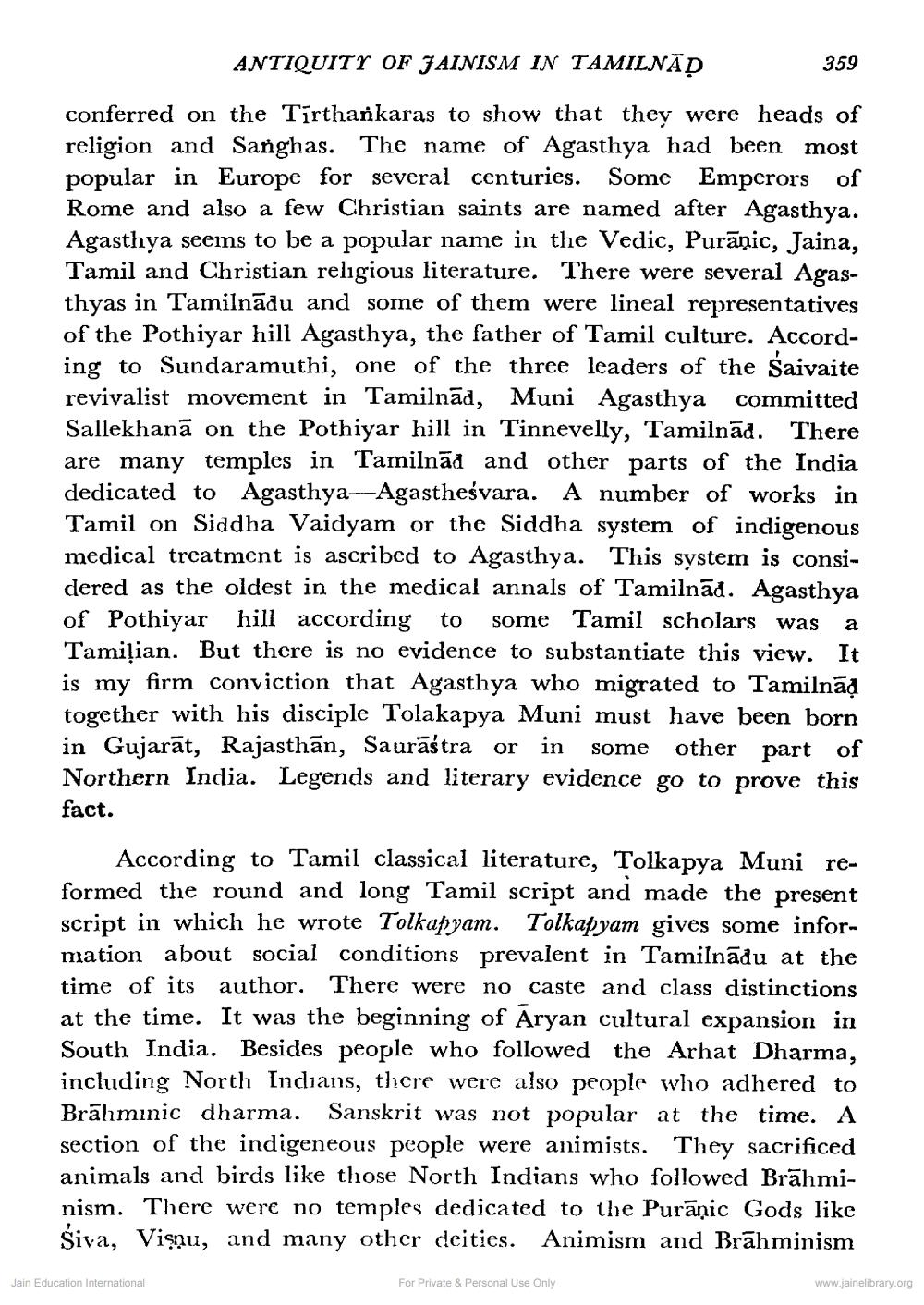________________
ANTIQUITY OF JAINISM IN TAMILNĀD
359
conferred on the Tīrthankaras to show that they were heads of religion and Sanghas. The name of Agasthya had been most popular in Europe for several centuries. Some Emperors of Rome and also a few Christian saints are named after Agasthya. Agasthya seems to be a popular name in the Vedic, Purānic, Jaina, Tamil and Christian religious literature. There were several Agasthyas in Tamilnādu and some of them were lineal representatives of the Pothiyar hill Agasthya, the father of Tamil culture. According to Sundaramuthi, one of the three leaders of the Saivaite revivalist movement in Tamilnād, Muni Agasthya committed Sallekhanā on the Pothiyar hill in Tinnevelly, Tamilnād. There are many temples in Tamilnād and other parts of the India dedicated to Agasthya--Agastheśvara. A number of works in Tamil on Siddha Vaidyam or the Siddha system of indigenous medical treatment is ascribed to Agasthya. This system is considered as the oldest in the medical annals of Tamilnād. Agasthya of Pothiyar hill according to some Tamil scholars was a Tamiļian. But there is no evidence to substantiate this view. It is my firm conviction that Agasthya who migrated to Tamilnāð together with his disciple Tolakapya Muni must have been born in Gujarāt, Rajasthān, Saurāśtra or in some other part of Northern India. Legends and literary evidence go to prove this fact.
According to Tamil classical literature, Tolkapya Muni reformed the round and long Tamil script and made the present script in which he wrote Tolkapyam. Tolkapyam gives some information about social conditions prevalent in Tamilnādu at the time of its author. There were no caste and class distinctions at the time. It was the beginning of Aryan cultural expansion in South India. Besides people who followed the Arhat Dharma, including North Indians, there were also people who adhered to Brālminic dharma. Sanskrit was not popular at the time. A section of the indigeneous people were animists. They sacrificed animals and birds like those North Indians who followed Brāhminism. There were no temples dedicated to the Purāņic Gods like Śiva, Vişnu, and many other deities. Animism and Brāhminism
Jain Education International
For Private & Personal Use Only
www.jainelibrary.org




